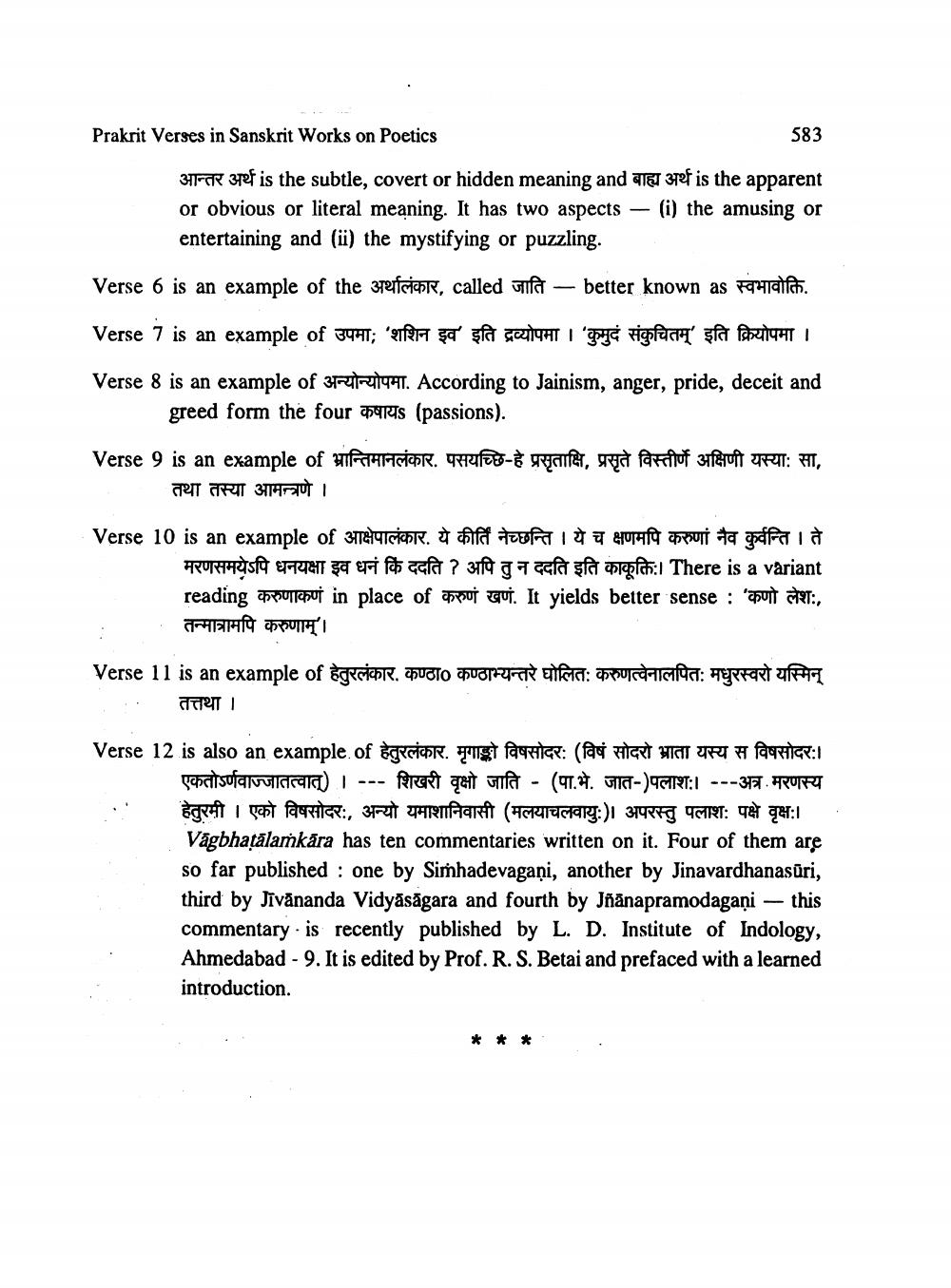________________
Prakrit Verses in Sanskrit Works on Poetics
583
आन्तर अर्थ is the subtle, covert or hidden meaning and बाह्य अर्थ is the apparent or obvious or literal meaning. It has two aspects — (i) the amusing or entertaining and (ii) the mystifying or puzzling.
Verse 6 is an example of the stefcior, called wild — better known as Fahialle. Verse 7 is an example of उपमा; 'शशिन इव' इति द्रव्योपमा । 'कुमुदं संकुचितम्' इति क्रियोपमा ।
Verse 8 is an example of अन्योन्योपमा. According to Jainism, anger, pride, deceit and
greed form the four 44s (passions).
Verse 9 is an example of भ्रान्तिमानलंकार. पसयच्छि-हे प्रसृताक्षि, प्रसृते विस्तीर्णे अक्षिणी यस्या: सा,
तथा तस्या आमन्त्रणे ।
. Verse 10 is an example of आक्षेपालंकार. ये कीर्ति नेच्छन्ति । ये च क्षणमपि करुणां नैव कुर्वन्ति । ते
मरणसमयेऽपि धनयक्षा इव धनं किं ददति ? अपि तु न ददति इति काकूक्तिः । There is a variant reading करुणाकणं in place of करुणं खणं. It yields better sense: 'कणो लेश:, तन्मात्रामपि करुणाम्।
Verse 11 is an example of हेतुरलंकार. कण्ठाo कण्ठाभ्यन्तरे घोलित: करुणत्वेनालपित: मधुरस्वरो यस्मिन्
तत्तथा ।
Verse 12 is also an example.of हेतुरलंकार. मृगाको विषसोदर: (विषं सोदरो भ्राता यस्य स विषसोदरः।
एकतोऽर्णवाज्जातत्वात्) | --- शिखरी वृक्षो जाति - (पा.भे. जात-)पलाश:। ---अत्र मरणस्य हेतुरमी । एको विषसोदरः, अन्यो यमाशानिवासी (मलयाचलवायु:)। अपरस्तु पलाश: पक्षे वृक्ष:।
Vägbhatālamkára has ten commentaries written on it. Four of them are so far published : one by Simhadevagani, another by Jinavardhanasuri, third by Jīvānanda Vidyāsāgara and fourth by Jñānapramodagani — this commentary is recently published by L. D. Institute of Indology, Ahmedabad - 9. It is edited by Prof. R. S. Betai and prefaced with a learned introduction.




